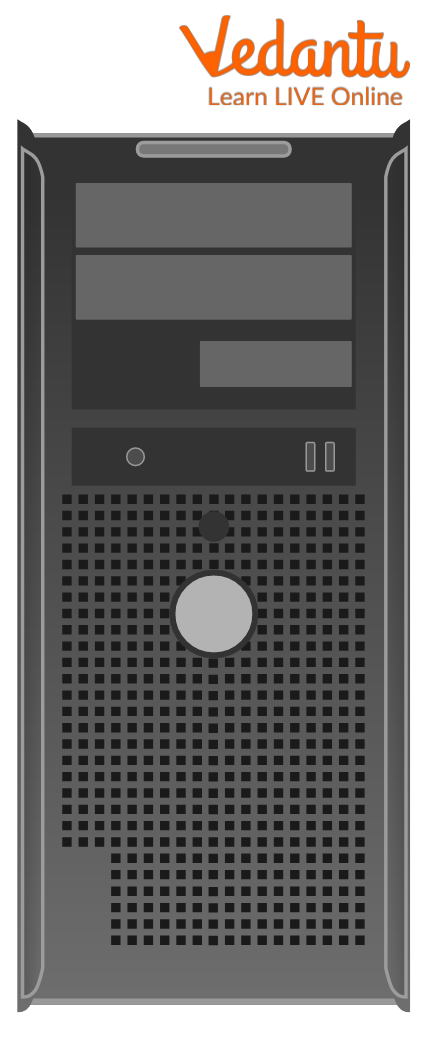




Definition of CPU: A Brief Introduction
Alternatively referred to as a processor, central processing unit or microprocessor, the CPU is the central processing unit of a computer. A computer's CPU processes all the instructions it receives from the hardware and software running on the computer. A CPU consists of three main components. These are the arithmetic logic unit, control unit and cache. What are these and what functions do they perform? To know more about these and CPU, keep reading through the rest of the article.
Main Parts of CPU
A typical CPU has three Components. They are as follows:
Arithmetic Logic Unit (ALU) The first is the Arithmetic Logic Unit (ALU), which performs simple arithmetic and logic operations.
Control Unit (CU): The second is the control unit (CU), which manages the various components of the computer. It reads and interprets instructions from memory and converts them into a series of signals to activate other parts of the computer. The control unit prompts the arithmetic logic unit to perform the necessary calculations.
Cache The third is the cache, which serves as high-speed memory to which instructions can be copied and retrieved. Early CPUs consisted of many separate components, but since the 1970s, they have been designed as a single integrated unit called a microprocessor. As such, a CPU is a specific type of microprocessor. Individual CPU components are so integrated that you don't even recognise them from the outside. This CPU is about two inches by two inches.

Central Processing Unit
Importance of CPU
The CPU or central processing unit is considered the brain of the computer, which means that every piece of information is processed in the CPU.
A computer can transfer instructions and perform its functions if the CPU is working well.
The CPU used to be the size of a room, but now its size has changed tremendously. But despite its smaller size, its functions are increasing rapidly.
The CPU acts as a processor where calculations take place. It is an internal part of any computer, whether it is a desktop, laptop, or notebook computer.
A CPU has two components, an arithmetic logic unit that performs all logic and arithmetic operations, and a control unit that retrieves all instructions from memory.
The CPU can also read information from external ports such as USB or an extra hard drive.
All functions can be controlled by the CPU. Just like humans, if the brain fails, they can die. With a computer, if the processor is damaged, the computer will never work. This is why the central processing unit is important.
Points to Remember
CPU is an abbreviation for "Central Processing Unit".
The CPU is the primary component of the computer that processes instructions.
It runs the operating system and applications and constantly receives input from the user or active software programs.
The CPU contains an arithmetic logic unit, a control unit, and a cache memory.
A CPU is sometimes also called a central processing unit or processor for short.
Learn by Doing
Choose the Correct Option.
1. The CPU stands for:
Central Processing Unit.
Central Periferal Unit.
Central Processing Utility.
Common Processing Unit.
2. Which one serves as a reader of coded information and gradually decodes or interprets all the information in memory?
CPU
Motherboard
Algorithm logic unit
None of these
3. Which of the following serves as high-speed memory to which instructions can be copied and retrieved?
Algorithm logic unit
Control Unit
Chache
None of these
Sample Questions
1. Where is the motherboard located?
Ans: The motherboard is located on the CPU. Motherboards have a socket for this that is specific to a certain type of processor.
2. Which device is called ‘Brain of Computer’?
Ans: The brain of the computer is the CPU or Central Processing Unit.
3. Write all the devices that are controlled by the central processing unit.
Ans: Microprocessors are tiny CPUs built onto a single chip. It is used to control any electric device function. We have the following example of devices which are controlled by this:
Computer System
Automatic washing machine
Alarm system
Intelligent Oven
Intelligent Fridge
Summary
A computer processor is a small chip (logic circuit) found in computers and other electronic devices. Its basic function is to receive and process the basic instructions that control the computer. CPU performs all the processes by using its three main components: Arithmetic Logic Unit (ALU), Control unit (CU), and Cache. Without a CPU, the computer can not work. It is one of the most important components inside a computer system. For example, the CPU processes the instructions to use a web browser to open and view this web page on your computer.
FAQs on Central Processing Unit (CPU)
1. Write two uses of the CPU.
Two uses of CPU are as follows:
The CPU serves as a reader of coded information and gradually decodes or interprets all the information in memory. The more valid the program, the better results the CPU will provide.
The encoding and decoding procedure is done quickly, so you can actually solve Maths problems, search for files, or create a publication in seconds. It is also important to put in backup memory so that the CPU can do more operations.
2. Difference between processor and CPU.
Also known as the central processing unit or CPU, the processor interprets and executes the basic instructions that operate the computer. So, the second name of processor is CPU or you can also call it central processing unit. The processor significantly affects the overall computing power and controls most of the computer's operations.
3. Explain what is cache memory.
It is a temporary memory storage area which helps to speed up data transfer in computers. A microprocessor looks for data in the cache memory as the data transfer cache is much faster. If the data is not found, the CPU looks for it in other memory.











